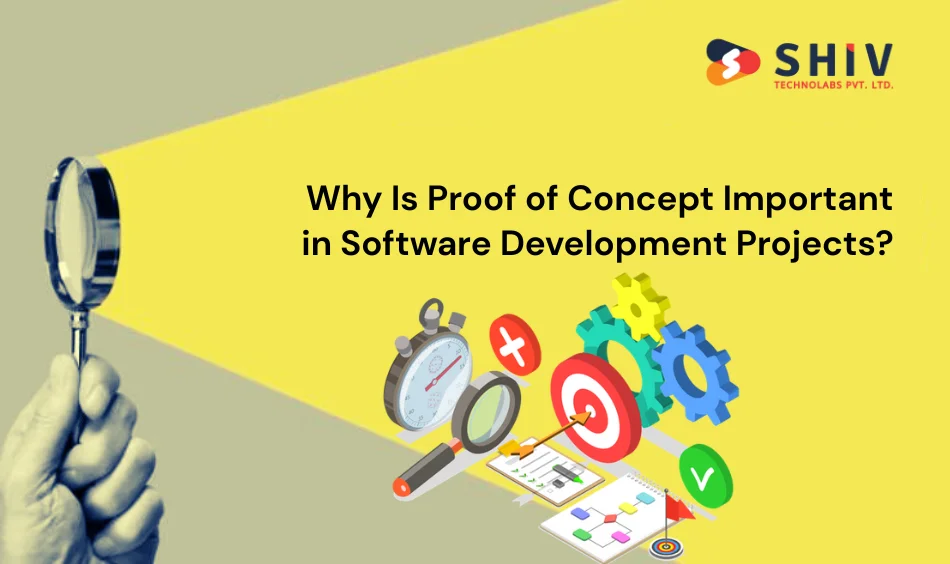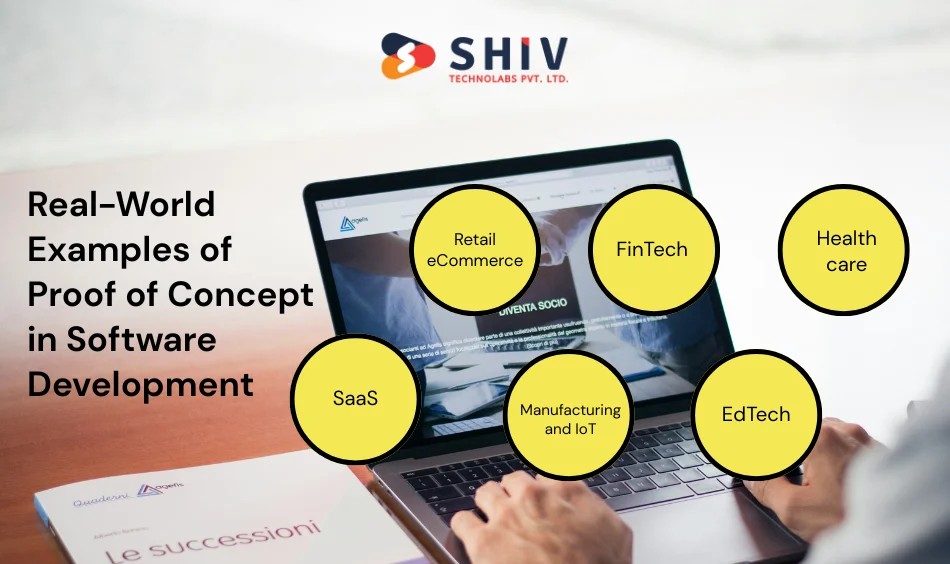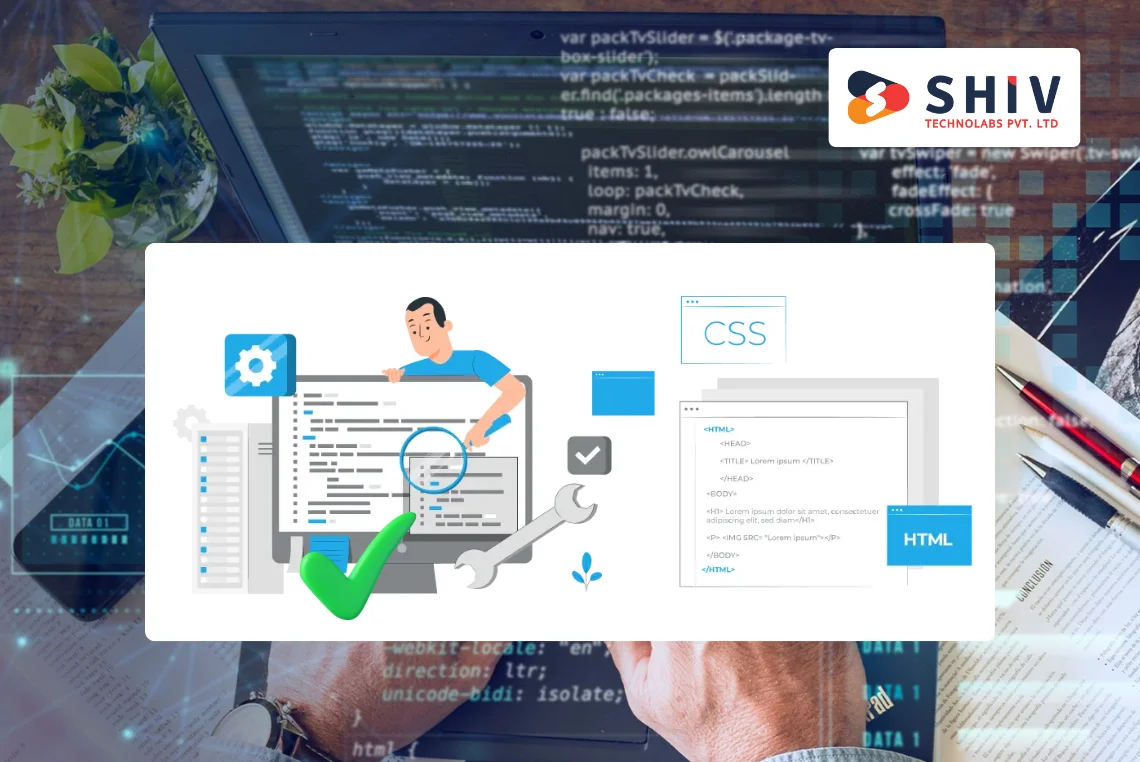Table of Contents
A proof of concept in software development shows that a core idea works under real limits. If you ask what is a proof of concept in software projects, it is a small test build that proves one claim. With PoC software development services, you turn that question into evidence that guides scope and funding.
It reduces rework by vetting logic, data paths, and integrations before teams commit serious time. Stakeholders get facts they can measure, not opinions, and product leads set realistic next steps.
You also confirm business value by testing whether the problem, metrics, and constraints line up with goals. The sections below explain the meaning of PoC and the way the process comes together.
By scoping one critical path, the team sets clear acceptance criteria and test data up front. That discipline turns early findings into a simple go, adjust, or pause decision for sponsors. It keeps expectations realistic and holds budgets in check while the concept takes clear shape.
What Is Proof of Concept (PoC) Development in Software Projects?
PoC development builds a narrow, working slice that proves one critical claim in your plan. Teams check core logic, data flow, or integration behavior under realistic conditions and success thresholds. The aim is proof, not polish, so the scope stays tight and the results stay measurable.
A prototype focuses on screens and interaction flow, often with mocked data or incomplete back-end logic. An MVP ships a usable product to study adoption, pricing signals, and retention in real settings. A PoC answers feasibility, while the others study design quality and market response under live usage.
PoC vs Prototype vs MVP
| Parameter | Proof of Concept (PoC) | Prototype | MVP |
|---|---|---|---|
| Goal | Validate technical feasibility | Visualize design/UI | Launch usable version |
| Duration | 1–4 weeks | 3–6 weeks | 2–3 months |
| Investment | Low | Moderate | High |
| Focus | Functionality & logic | Design & flow | Market fit |
Pick the method that matches your stage, risk tolerance, and budget for the next milestone. For deeper insights into technical stacks and architecture planning, read our post on how to build an eCommerce backend.
Useful outputs include small code artifacts, a sketch of the target architecture, and a concise findings report. An experienced partner brings patterns, sample data, and lab setups that reduce trial time and guesswork. Those assets carry forward into backlog planning for a prototype or MVP without wasted effort.
Keep the slice narrow by choosing one or two paths, such as payment authorization or batch data processing. Limit variables so results point to the main claim, not to unrelated edge cases during testing.
Why Is Proof of Concept Important in Software Development Projects?

Proof of concept adds discipline to early software decisions by testing risky assumptions with real constraints. It focuses teams on evidence, so budgets and plans reflect how the idea behaves in practice.
That is why proof of concept is important in software planning and stakeholder communication today. Strong PoC implementation in projects reduces uncertainty, shortens learning cycles, and guides the first production milestones.
Benefits of PoC Implementation
- Reduces investment risk before large-scale build
- Confirms the technical feasibility of the solution
- Saves cost and time by avoiding rework
- Builds stakeholder and investor confidence
- Helps secure funding through tangible proof
Consider a startup proposing an AI fraud filter for instant payments in a crowded fintech market. A two-week PoC with a Custom Software Development team tests accuracy, benchmarks latency, and checks gateway limits.
Leaders gain clear signals before committing to large roadmaps or complex contracts, with practical risk boundaries defined. Product and engineering align earlier, based on metrics they define and shared logs they review.
Investors respond better to working evidence than slide decks, especially for deep tech claims during fundraising. A concise demo with numbers turns opinions into facts and supports a realistic funding timeline.
PoC work also protects schedules by catching brittle integrations, missing data, or hidden constraints early. Fixing these issues now prevents costly rewrites and painful changes during late development stages across teams.
By isolating the narrowest slice, teams avoid building features that later fail basic tests under real constraints. That focus speeds learning and protects budgets by removing work that never supported the core claim.
Seasoned teams bring reusable patterns and lab setups that cut learning time and reduce rework. Define success metrics upfront, such as throughput, error rates, and capacity headroom under test load.
Publish a short readout that records findings, risks, and follow-ups for the next milestone decision. Teams that repeat this method build a trail of evidence across sprints and align the roadmap. The backlog then matches what technology and market signals permit without expensive surprises downstream.
How to Create a Proof of Concept for Software Projects
This guide shows how to create a proof of concept for software with practical, testable steps. Effective PoC implementation in projects starts with a tight scope, measurable signals, and short, timeboxed cycles. You reduce guesswork, guide funding, and prepare a clean handoff into prototype or MVP work.
Step 1 – Define the Problem and Objectives
Write one problem sentence naming the user, the pain, and the expected outcome today clearly. Add two or three objectives with thresholds, like latency under 150ms or accuracy above 92%. Tie each objective to test data, a target environment, and an owner accountable for results.
Step 2 – Conduct Technical and Market Feasibility Research
List candidate frameworks, APIs, models, and hosting options with licensing, quotas, and regional limits documented. Scan competitors, regulations, and integration constraints that could affect data access or delivery timelines materially. Record early risks, plan quick spikes, and schedule vendor calls to clarify unknowns before building.
Step 3 – Design and Build a Minimal Prototype
Sketch the smallest workflow that proves one claim, such as tokenization or batch scoring reliably. Build a thin demo that runs end-to-end with stubs where full systems are unnecessary. Add basic error handling, a test harness, and structured logs that capture repeatable measurements consistently.
Step 4 – Test Functionality and Collect Feedback
Run targeted tests against thresholds for throughput, latency, error rate, and stability under short bursts. Invite a product lead, senior engineer, and business sponsor to observe the demo and artifacts. Capture notes on clarity, risk, reproducibility, and effort, paired with the numbers your harness produced.
Step 5 – Evaluate Results and Document Learnings
Compare results with objectives and mark each outcome as pass, partial, or fail with reasons. Document tradeoffs, such as cost versus speed, accuracy versus complexity, and vendor lock-in versus portability. Convert findings into a roadmap that lists work to keep, cut, or postpone deliberately soon.
An experienced partner supplies checklists, sample data, and preconfigured labs that compress cycles without inflating scope. You get clear findings faster, fewer dead ends, and a cleaner handoff into design or MVP planning. If you want hands-on help, we can map your PoC plan within days and start executing.
Real-World Examples of Proof of Concept in Software Development

These examples of proof of concept in software development show how short trials cut risk early. A focused proof of concept in software development tests one claim, measures results, and guides budget decisions. Each case below uses simple targets and quick cycles to produce evidence that teams can trust.
A payment startup trials tokenization and 3-D Secure with a sandbox gateway for two weeks. Targets include authorization latency under 200ms and clean failure handling during throttling and rate-limit events.
A clinic checks an imaging model on de-identified scans with a clinician review loop. Goals track sensitivity above ninety percent and inference time under three hundred milliseconds on standard GPUs.
Retail and eCommerce:
A fashion store tests a recommendations engine on a small audience segment with real orders. Success means a three-point lift in add-to-cart rate and overnight training that finishes before merchandising updates.
SaaS:
A workflow platform runs a multi-tenant load test on containers with basic autoscaling rules. The team watches 95th-percentile response times and surfaces hidden quota limits from a third-party API.
Manufacturing and IoT:
A plant trials sensor ingestion from ten production lines with edge filtering and batch upload. The PoC tracks packet loss under one percent and end-to-dashboard delay under five seconds.
EdTech:
A learning app checks adaptive quizzes backed by a lightweight scoring service. Targets include a quiz load in under two seconds and a small lift in session completion for new users.
A tight PoC turns debate into numbers that support confident next steps. Repeat this method for your riskiest assumptions, then carry code, configs, and findings into the next build. If you want guided support, our senior team can plan a focused two-week PoC that answers your hardest question first.
What Factors Influence the Cost of PoC Development?
The cost of PoC development depends on scope, risks, and the depth of testing you plan. In proof of concept development, small choices such as data volume or third-party quotas can change time and spending quickly.
PoC Development Cost Breakdown
| Factor | Description | Cost Impact |
|---|---|---|
| Project Complexity | Number of flows and risky claims | High |
| Tech Stack | Frameworks, tools, paid APIs | Medium |
| Team Composition | Developers, designer, tester, PM | High |
| Timeline | Weeks required for a clear result | Medium |
| Testing & Feedback | Method, dataset size, stakeholder time | Variable |
A focused slice and a tight test plan lower surprises and reduce avoidable rework. Strong scoping also protects budgets while still delivering numbers you can trust in funding reviews.
How Expert Teams Drive Successful PoC Implementation
Seasoned partners keep PoC implementation in projects fast, measurable, and safe for proof of concept in software development.
How expert teams add value
- Translate business goals into testable technical tasks
- Run short sprints with timeboxed checkpoints
- Deliver feasibility notes and architecture sketches
- Build with security, audit, and basic scalability in mind
- Prepare a clean handoff to prototype or MVP
When Should You Consider Building a Proof of Concept?
These moments call for a focused trial that clarifies what is a proof of concept in software projects.
Scenarios
- New or untested tech: AI, IoT, blockchain, or niche vendor APIs
- Investor pitch or grant application that needs working proof
- Market test for a fresh product idea on a small audience
- Expansion of an existing platform into a new region or use case
Validate Your Idea with Our Expert PoC Software Development Services
Shiv Technolabs offers PoC software development services that turn early questions into hard numbers for leaders and investors. Our senior team scopes one critical path, sets clear thresholds, and builds a running demo that proves or rejects the claim.
We map risks, record findings, and suggest next steps with code, configs, and a short readout. Your plan moves forward with evidence, not guesses, and your backlog reflects what the technology and market allow today.
Service highlights
- Business idea feasibility review
- Technical architecture planning with risk notes
- Functional PoC build and targeted testing
- Clear reports with performance and cost signals
- Smooth transition to MVP or full product phase
Conclusion
A disciplined PoC reduces risk, exposes hidden limits, and guides budgets with facts rather than opinions. Short, targeted trials reveal feasibility across logic, data, and integrations while keeping the scope under control.
If you want steady progress from concept to delivery, partner with a trusted PoC software development company. You will gain measurable proof, clearer roadmaps, and stronger confidence before funding larger development milestones.
FAQs
What is the main goal of a Proof of Concept in software development?
It validates feasibility and key functionality before serious budgets and timelines begin. Teams confirm assumptions with measurable tests and real constraints.
How long does a typical PoC take to complete?
Most PoCs run two to six weeks, based on scope and risks. Tight objectives and timeboxing keep the effort focused and efficient.
Why do startups and enterprises use PoC development?
They want to cut risk, prove early ROI, and build investor trust. A working demo with metrics supports faster, better funding calls.
What is the average cost of PoC development?
Costs vary by complexity, tools, and data needs. Use the cost table above to frame estimates and highlight the main drivers.
How is PoC different from a prototype or MVP?
A PoC proves feasibility for one claim, a prototype tests design flow, and an MVP checks market response. Each step answers a different question.






















